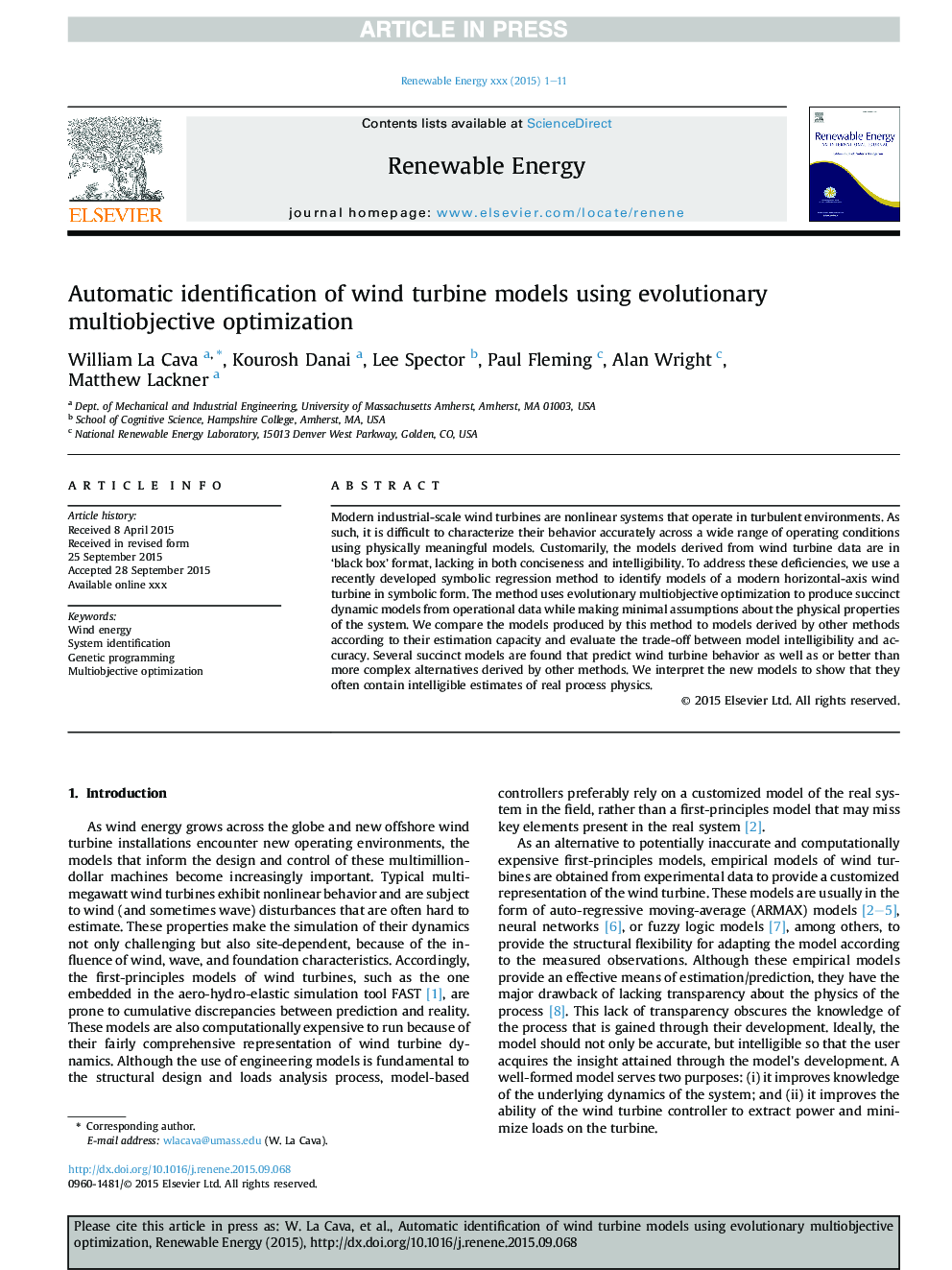| Article ID | Journal | Published Year | Pages | File Type |
|---|---|---|---|---|
| 10294034 | Renewable Energy | 2016 | 11 Pages |
Abstract
Modern industrial-scale wind turbines are nonlinear systems that operate in turbulent environments. As such, it is difficult to characterize their behavior accurately across a wide range of operating conditions using physically meaningful models. Customarily, the models derived from wind turbine data are in 'black box' format, lacking in both conciseness and intelligibility. To address these deficiencies, we use a recently developed symbolic regression method to identify models of a modern horizontal-axis wind turbine in symbolic form. The method uses evolutionary multiobjective optimization to produce succinct dynamic models from operational data while making minimal assumptions about the physical properties of the system. We compare the models produced by this method to models derived by other methods according to their estimation capacity and evaluate the trade-off between model intelligibility and accuracy. Several succinct models are found that predict wind turbine behavior as well as or better than more complex alternatives derived by other methods. We interpret the new models to show that they often contain intelligible estimates of real process physics.
Related Topics
Physical Sciences and Engineering
Energy
Renewable Energy, Sustainability and the Environment
Authors
William La Cava, Kourosh Danai, Lee Spector, Paul Fleming, Alan Wright, Matthew Lackner,
